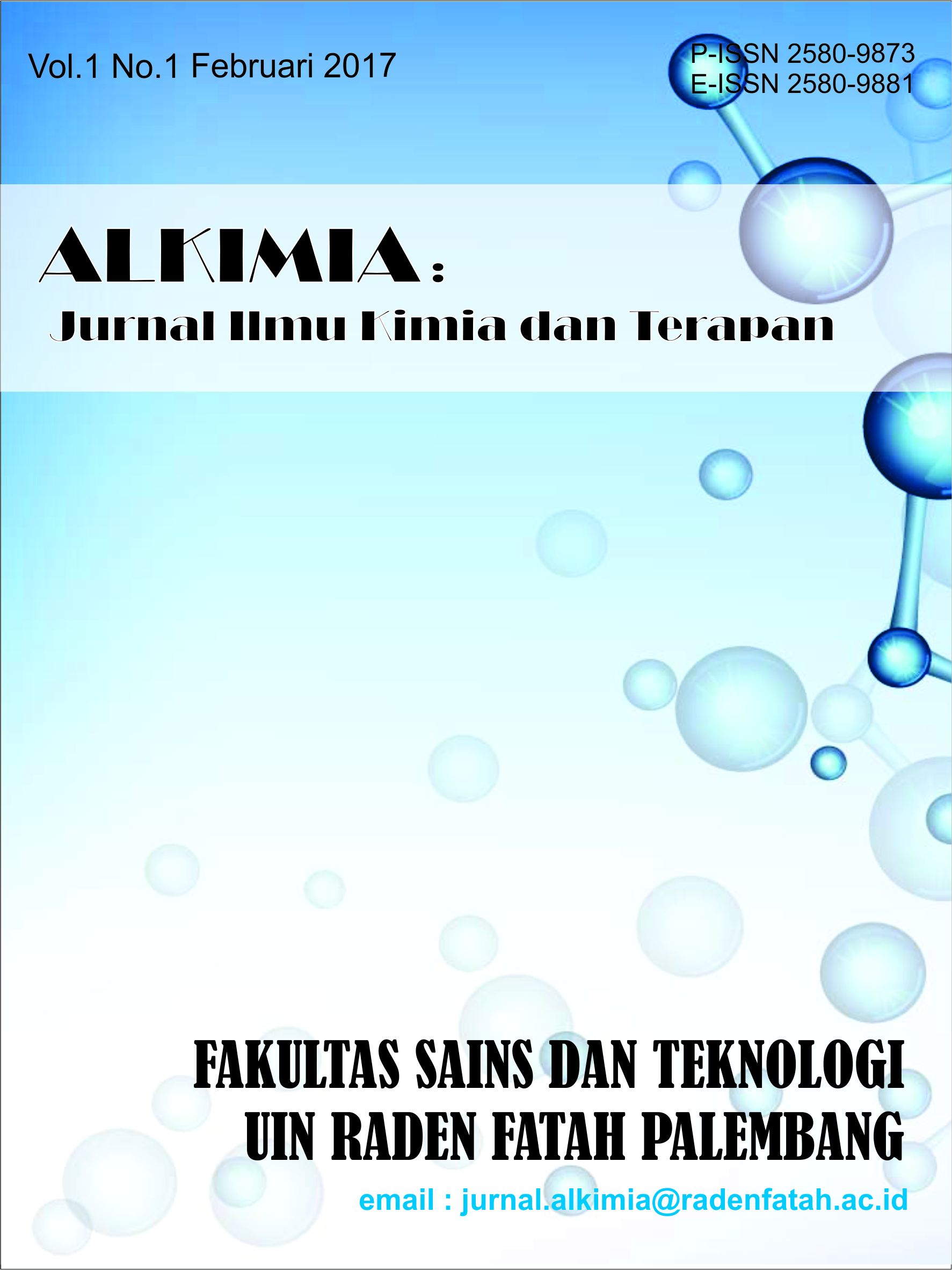The Production of Activated Carbon From Palm Oil Trunks With Phosphoric Acid Activator (10%, 20% and 30%)
DOI:
https://doi.org/10.19109/zj5sm953Keywords:
Oil Palm Trunks, Activated Carbon, Adsorbent, Phosphoric AcidAbstract
Activated carbon is charcoal which can be used as an adsorbent by activated using chemicals to open the pores. In making activated carbon, three stages They were dehydration, carbonization and activation using Phosphoric Acid (H3PO ). From the results of the characteristic testing. it was obtained water content, ash content, volatile matter and iodine absorption capacity. The results of these tests indicated that at each concentration of phosphoric acid (10%, 20% dan 30%) activated carbon complied with SNI 06- 3730-1995 and The results of SEM (Scanning Electron Microscope) testing before activation were of size 6.66 µm and after activation of phosphoric acid (HPO4) concentrations of 10% (14,79 µm), 20% (21,87 µm), dan 30% (23,25 µm) respectively.
References
M. P. Ir Nurhayati, Pertumbuhan Planlet Kelapa Sawit Memiliki Mutu Akar Di Prenursery. CV. AZKA PUSTAKA, 2022.
D. D. Jaya and M. Khair, “Pembuatan Karbon Aktif melalui Karbonisasi Batang Kelapa Sawit,” Chemistry Journal of State University of Padang, vol. 9, no. 1, pp. 7–10, 2020.
R. D. P. Pane and E. N. Ginting, “BORON –HARA MIKRO ESENSIAL UNTUK TANAMAN KELAPA SAWIT,” WARTA Pusat Penelitian Kelapa Sawit, vol. 28, no. 2, pp. 71–84, 2023.
A. Imani, T. Sukwika, and L. Febrina, “Karbon aktif ampas tebu sebagai adsorben penurun kadar besi dan mangan limbah air asam tambang,” J Teknol, vol. 13, no. 1, pp. 33–42, 2021.
E. Kusdarini, A. Budianto, and D. Ghafarunnisa, “Produksi karbon aktif dari batubara bituminus dengan aktivasi tunggal H3PO4, kombinasi H3PO4-NH4HCO3, dan termal,” Reaktor, vol. 17, no. 2, pp. 74–80, 2017.
M. P. PUTRI, “Sintesis Dan Karakterisasi Komposit Cu/Cuocu2o/Karbon Aktif Sebagai Katalis Pada Isomerisasi N-Heptana,” 2022.
R. A. F. Lubis, H. I. Nasution, and M. Zubir, “Production of activated carbon from natural sources for water purification,” Indonesian Journal of Chemical Science and Technology, vol. 3, no. 2, pp. 67–73, 2020.
A. Nurrahman, E. Permana, D. R. Gusti, and I. Lestari, “Pengaruh konsentrasi aktivator terhadap kualitas karbon aktif dari batubara lignit,” Jurnal Daur Lingkungan, vol. 4, no. 2, pp. 44–53, 2021.
D. Lestari and E. Nasra, “Preparasi Karbon Aktif Kulit Durian dengan Aktivator NaOH serta Penyerapannya terhadap Logam Berat Pb (II),” Chemistry Journal of Universitas Negeri Padang, vol. 11, no. 2, pp. 50–55, 2022.
H. I. Sholikhah, H. R. Putri, and I. Inayati, “Pengaruh konsentrasi aktivator asam fosfat (H3PO4) pada pembuatan karbon aktif dari sabut kelapa terhadap adsorpsi logam kromium,” Equilibrium Journal of Chemical Engineering, vol. 5, no. 1, pp. 45–50, 2021.
T. F. Adawi, I. M. L. Aji, and D. S. Rini, “Pengaruh Suhu Dan Konsentrasi Asam Fosfat (H3po4) Terhadap Kualitas Arang Aktif Cabang Bambu Duri (Bambusa Blumeana Bi. Ex. Schult. F.)(Effect of Temperature and Concentration of Phosphoric Acid (H3po4) on the Quality of Activated Charcoal of Bambusa Blumeana Branch),” Jurnal Penelitian Kehutanan Faloak, vol. 5, no. 1, pp. 62–73, 2021.
Y. W. Hydhayat, M. A. S. A. Rifai, and S. Sani, “Karbon Aktif Dari Limbah Daun Jati Menggunakan Aktivator Larutan Koh,” Jurnal Teknik Kimia, vol. 16, no. 2, pp. 87–92, 2022.
M. Meilianti, “Karakteristik karbon aktif dari cangkang buah karet menggunakan aktivator H3PO4,” Jurnal Distilasi, vol. 2, no. 2, pp. 1–9, 2022.
Downloads
Published
Issue
Section
License
Copyright (c) 2024 Dian Dwi Lestari, Sulton Amna, Achmad Faisal F., Asmike, Dimas Zuliat S

This work is licensed under a Creative Commons Attribution-ShareAlike 4.0 International License.
- The author saves the copyright and gives the journal simultaneously with the license under Creative Commons Attribution License which permits other people to share the work by stating that it is firstly published in this journal.
- The author can post their work in an institutional repository or publish it in a book by by stating that it is firstly published in this journal.
- The author is allowed to post their work online (for instance, in an institutional repository or their own website) before and during the process of delivery. (see Open Access Effect).







.png)




